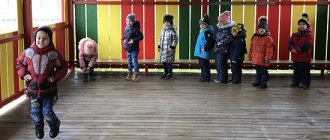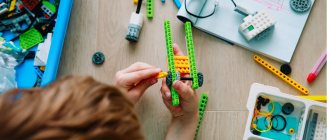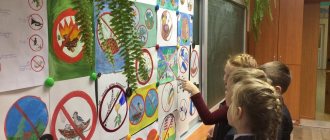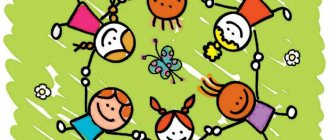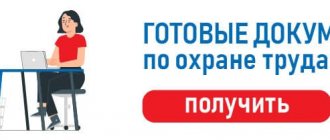Main tasks of preschool education
Kindergarten is the second social institution in a child’s life after the family. Education in kindergarten is aimed primarily at teaching children to live in society, developing the necessary skills of communication and interaction with people around them. For preschool children, communication with peers is a necessary component of harmonious development, because thanks to the developed effect of imitation, learning in a team allows you to master new knowledge and skills much faster. Many parents are frightened by the process of their child’s adaptation to kindergarten. However, the competent behavior of educators makes it possible to smooth out this process and carry it out as painlessly as possible, in contrast to the difficulties that await home children in the school community.
The tasks of preschool education in kindergarten include teaching the basic laws of communication: the child learns to seek a compromise between his desires and the interests of others, to defend his point of view and at the same time be able to restrain himself when resolving disputes. Under the supervision of a teacher, children acquire the first skills of independence, which form the basis for the child’s self-organization at home and, in the future, at school. It is especially valuable that in a children's group all these skills are formed in the most natural way - during play and in the process of communicating with other children.
Of course, kindergarten education does not in any way detract from the value of home education. However, given that modern families rarely have more than one child, kindergarten remains the most accessible source of communication and development in a team.
In addition to getting to know society, the goals of education in kindergarten are the mental, physical, moral and aesthetic development of the child. All these are necessary components for the formation of a full-fledged self-sufficient personality. The teacher’s task is to offer a wide variety of activities that will allow each student in the group to realize their potential. This could be drawing, designing and creating applications, music classes, physical education or gymnastics, and also, additionally, learning a foreign language, choreography and much more. In this way, conditions are created for the development of five basic personal potentials - cognitive, communicative, value-based, artistic and physical.
Popular destinations
The most common methods of preschool education today also deserve special attention:
1. Nikitin’s technique. It is based on such postulates as work, creativity, naturalness and love of nature. At the same time, the child studies exactly as much as he wants, the environment is as sporty as possible, and parents take an active part in the educational process. All games using this method should expand and become more complex over time.
2. Maria Montessori's method. This is a whole pedagogical system, the main motto of which is the phrase “help me do everything myself.” The scientist believes that the baby’s entire environment should be filled with the most useful objects that serve a specific purpose. The games proposed by this system are aimed at developing sensory skills, speech, as well as teaching reading, writing and mathematics.
3. Glen Doman's technique. The favorite phrase of this American physiotherapist, which became the motto of the educational system, is: “Without facts there is no knowledge.” The scientist believes that the baby should be introduced to the maximum number of facts, structured into sections and categories.
4. Zaitsev’s technique. A very common way of teaching reading today is with the help of Zaitsev’s cubes. The scientist believes that it is much easier for a child to learn to read while playing than sitting at a desk. The unit of reading according to this method is not a familiar word, but a syllable - pairs of vowels and consonants.
5. Walfdor method. When studying preschool education and training, one cannot ignore this direction, since it is precisely this direction that is most aimed at developing the creative abilities of children. With kids you need to sculpt, embroider, build – do everything using natural materials. In addition, a lot of attention should be paid to the physical development of children.
6. Voskobovich technique. It is based on the close relationship between a child and an adult. The activity is aimed at the creative development of the child, learning while playing.
7. Zankov's technique. It is recommended to give the baby as much attention as possible. It is most often used when it is necessary to work with children who have problems learning the material.
Kindergarten education program
There are a great many programs for raising children, and each kindergarten has the right to draw up its own program, but it is necessary to be guided by the requirements set out in the relevant regulations: the Federal Law “On Education”, the Model Regulations on a Preschool Educational Institution and state standards of preschool education.
In modern preschool education, such a Program has become a necessary regulatory document, on the basis of which a license is obtained, accreditation and certification of an institution, as well as the organization of additional paid educational services. The educational program in a kindergarten must justify the chosen methods of education and methods of organizing the educational process and clearly describe the main features of the educational system adopted in this kindergarten.
If a preschool education program is needed in order to formulate the goals and objectives of education, then they are implemented using various methods and technologies. Preschool education technologies make it possible to combine individual techniques and methods into an integral system and organize the upbringing of children in the most rational and effective way. Most often, educational technologies are created by educators directly based on their own experience in raising children, which guarantees the rapid achievement of the desired results.
Today, in many kindergartens, educational technologies are based on well-known educational methods, for example, Montessori, Nikitins, Doman. Each of them is focused primarily on one aspect of the child’s development, so the main task of parents when choosing a kindergarten is to carefully study the educational methods used there and determine for themselves which of the proposed systems best suits the individual characteristics of the child. On the other hand, the task of kindergarten workers is to select a set of methods that will ensure the comprehensive development of children.
The essence of the process
Preschool education - what is it? It is simply impossible to answer this question in one sentence. This is a whole complex of actions of people who surround the baby, contributing to his development as an individual. Not only specialists (for example, kindergarten teachers), but also, first and foremost, parents should be involved in raising the baby. It is important for moms and dads to remember that babies are like sponges, literally absorbing everything they see and hear. Therefore, the main task of adults is to create all the conditions in order to raise a smart and happy child.
Features of raising children in kindergarten
Raising preschool children is very different from subsequent education at school. Each age has its own laws according to which a child develops. In kindergarten, teachers are faced with a serious and very difficult task: to impart to children all the necessary skills and develop in them all those abilities that are impossible to do without at subsequent stages of development and education. To solve it, it is necessary to find the key for each child, to find the most suitable ways for him to present new information and learning. These can be explanations from the teacher, practical tasks or role-playing games, the main thing is that during the learning process the child has the opportunity to be independent and not just follow the instructions of the teacher. The use of various methods of education in kindergarten allows you to achieve the desired result and take into account the individual characteristics of children in the group.
One of the serious problems of preschool education is continuity between kindergarten and primary school. Traditionally, kindergartens are focused mainly on the general development of the child, while primary schools often place quite high demands on the quality of preschool education, expecting first-graders to possess the skills of mental arithmetic, reading and even writing. In addition, it is believed that schoolchildren are more disciplined and diligent than preschool children. In order to instill in children the necessary qualities, in recent years, raising children in kindergarten often includes special classes to prepare for school. Built according to the scheme of a school lesson, they psychologically prepare children for a new stage of learning. Such activities may include teaching basic arithmetic, writing and reading. At the request of parents and, as a rule, for a fee, the kindergarten management can offer foreign language classes and work with educational computer programs.
About fine motor skills
Already at this stage, it is extremely clear to most parents how important preschool education is. Activities with the baby - that’s what else moms and dads need to think about. And the very first home lessons should be aimed specifically at developing the baby’s fine motor skills (it should be developed from the age of six months). Why is this so important? It's simple: people have many receptors on their fingertips that are directly related to brain activity. Scientists have long proven that the development of fine motor skills in children directly affects the speech of the baby. What can be used:
1. Finger gymnastics. It’s great to learn a few rhymes, saying them each time. This way the baby will also train his memory.
2. Games with small objects. Under adult supervision, a child can sort through various small things and toys.
3. Sorting. A great activity: pour semolina into your child’s bowl and mix it with peas. Next, give the baby the task of finding all the peas. In addition to the fact that the process will captivate the child for a long time, it will also train fine motor skills.
4. Tactile games. The child should be allowed to try by touch as many objects of different textures as possible. Plastic figures, metal parts, and various rags are suitable. At the same time, the baby will not only learn colors, but will also experience the world by touch.
Taboo
The child's preschool education program should exclude certain points that parents should always take into account:
1. Modern psychologists do not recommend using physical punishment on a child. You need to try to remain calm in any situation, without showing your weaknesses to the baby. In addition, physical punishment does not lead to the child realizing his mistakes. Only conversation, conversation - this is what will help a parent raise an adequate person.
2. It is not recommended to scare a child. And if you do this, then only competently. You can’t say to the baby, “I’ll give you to someone else’s uncle” or “I’ll leave you here alone.” This creates a lot of fears. You can say the following: “You will be without sweets/toys/entertainment for a whole week).”
3. You can’t stop talking to your baby, just start ignoring him.
4. As a punishment, it is not recommended to force the baby to stand or sit still.
Voskobovich games
Educational games created by physicist-engineer Vyacheslav Voskobovich. They represent a developing environment of different zones and elements, united by one fairy-tale plot.
What principles does it work on?
- It is based on three principles: interest, knowledge and creativity. This builds cognitive and research skills.
- Games are developed in accordance with the interests of the children. Each can be used by children from 2 to 7 years old; for younger children the tasks are simpler.
- The developmental environment “Purple Forest” has been developed for games, with several zones in which the child fulfills certain needs.
What goals does the child achieve?
The main goals of technology are learning new things, developing the ability to observe, building confidence, a harmonious approach to the development of emotionality, imaginative thinking and logic.
What should a teacher be like?
- The teacher must understand the material: know the games, be able to build a plot.
- The teacher must involve the children in the game; some time must be spent getting to know its rules.
- The teacher does not evaluate the completion of assignments. Each age has its own level; if you can’t cope, you can move on to an easier one.

